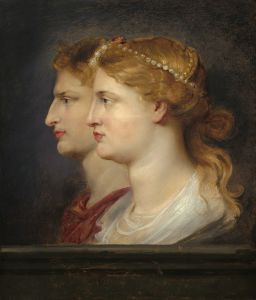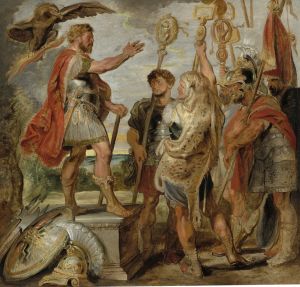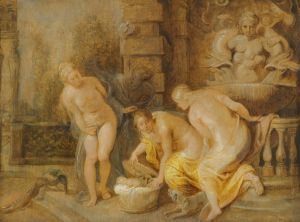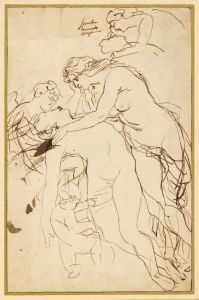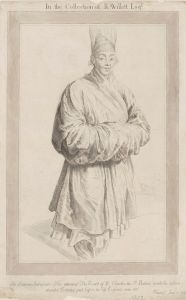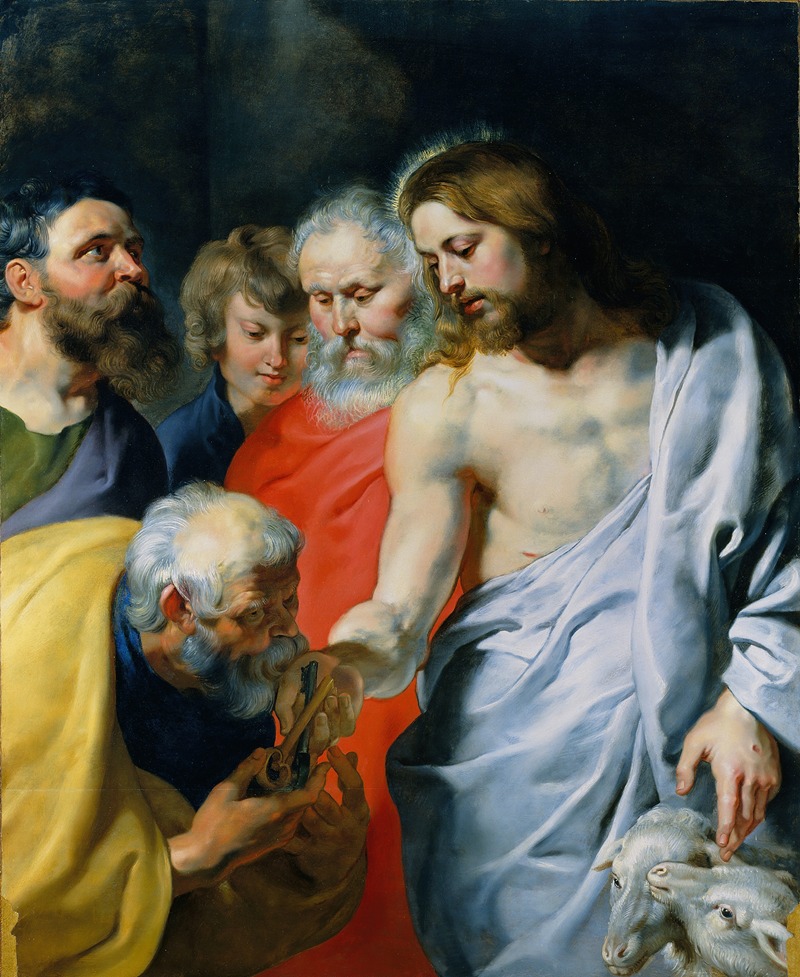
Christ’s Charge to Peter
A hand-painted replica of Peter Paul Rubens’s masterpiece Christ’s Charge to Peter, meticulously crafted by professional artists to capture the true essence of the original. Each piece is created with museum-quality canvas and rare mineral pigments, carefully painted by experienced artists with delicate brushstrokes and rich, layered colors to perfectly recreate the texture of the original artwork. Unlike machine-printed reproductions, this hand-painted version brings the painting to life, infused with the artist’s emotions and skill in every stroke. Whether for personal collection or home decoration, it instantly elevates the artistic atmosphere of any space.
"Christ’s Charge to Peter" is a painting by the renowned Flemish Baroque artist Peter Paul Rubens. Created in the early 17th century, this artwork is a significant example of Rubens' mastery in religious themes, characterized by his dynamic compositions, vibrant color palette, and expressive figures.
The painting depicts a biblical scene from the New Testament, specifically from the Gospel of John, chapter 21, verses 15-17. In this passage, after His resurrection, Jesus Christ appears to His disciples and addresses Simon Peter. Jesus asks Peter three times if he loves Him, and after each affirmation, Jesus instructs Peter to "feed my lambs," "tend my sheep," and "feed my sheep." This moment is interpreted as Christ entrusting Peter with the pastoral care of His followers, symbolizing Peter's leadership role in the early Christian Church.
Rubens' interpretation of this scene captures the emotional intensity and spiritual significance of the moment. The composition typically centers on the figures of Christ and Peter, with Christ often depicted in a gesture of blessing or instruction, while Peter is shown in a posture of humility and devotion. The interaction between the two figures is the focal point, highlighting the transfer of responsibility and the deep bond between the teacher and disciple.
Rubens' style is evident in the dramatic use of light and shadow, which adds depth and volume to the figures, enhancing the three-dimensionality of the scene. His use of rich, warm colors and fluid brushwork contributes to the overall dynamism and vitality of the painting. The figures are rendered with a naturalism that conveys both physical presence and psychological depth, a hallmark of Rubens' approach to religious subjects.
The painting reflects Rubens' deep engagement with classical and Renaissance art, drawing inspiration from the works of artists such as Michelangelo and Raphael, while also incorporating his own innovative techniques. Rubens was known for his ability to convey complex theological concepts through accessible and emotionally resonant imagery, making religious narratives compelling to a broad audience.
"Christ’s Charge to Peter" is part of Rubens' broader body of work that includes numerous altarpieces and religious commissions. His paintings were highly sought after by churches and collectors throughout Europe, and his influence extended beyond his lifetime, impacting the development of Baroque art across the continent.
The exact location of this particular painting can vary, as Rubens created multiple works on similar themes, and his paintings are housed in various museums and collections worldwide. However, the enduring appeal of "Christ’s Charge to Peter" lies in its powerful depiction of faith, leadership, and the enduring legacy of Peter as a foundational figure in Christianity.
Rubens' ability to blend narrative clarity with artistic grandeur ensures that "Christ’s Charge to Peter" remains a significant work in the study of Baroque religious art, reflecting both the spiritual and artistic values of its time.










